Introducing 10 Inspiring MN Athletes You've Never Heard Of
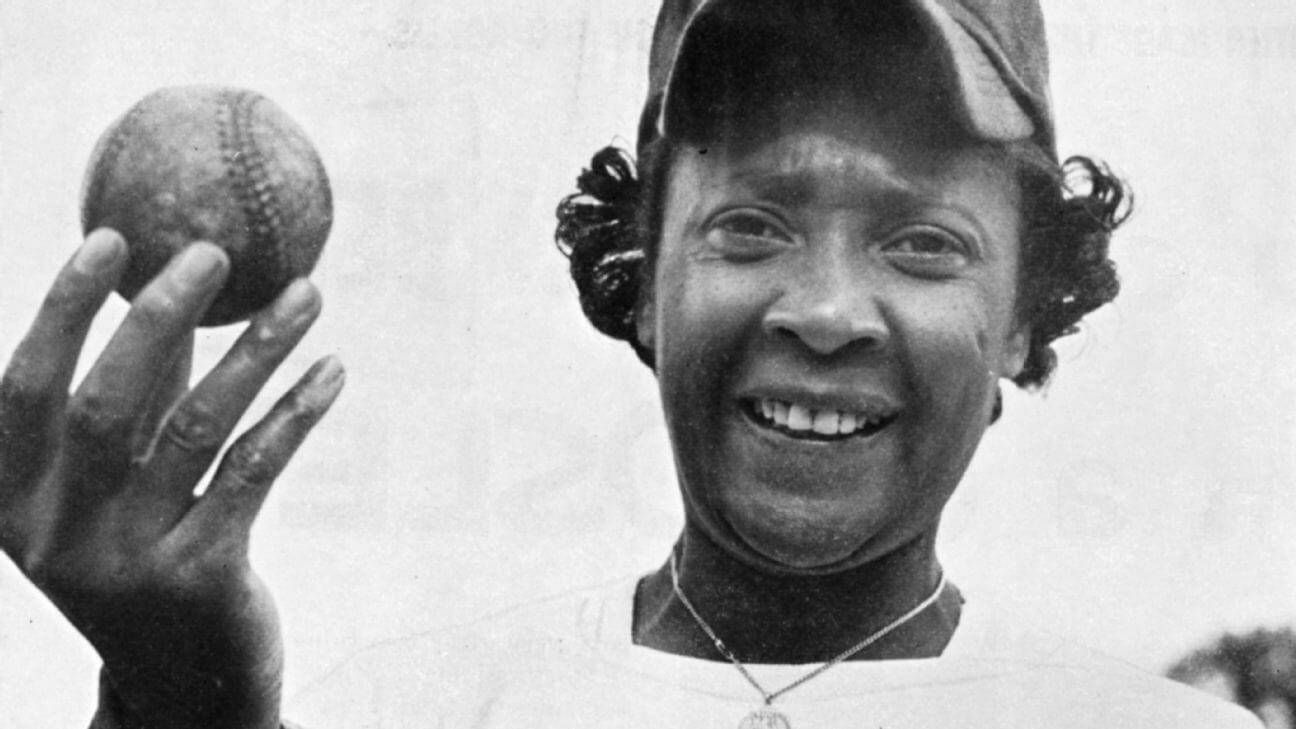
Stare down the annals of Minnesota sports history and names like Garnett, Puckett and Whalen immediately spring to mind. But allow us to introduce you to 10 Minnesota athletes and athletic influencers whose names you may not know, but whose legacies you will no doubt remember.
Billy Williams
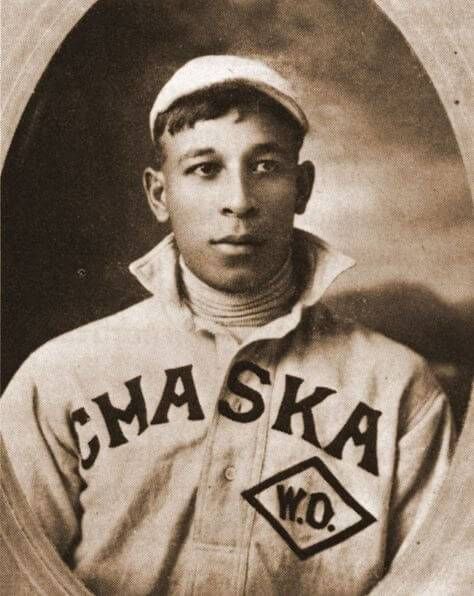
Born in Saint Paul in 1877, Billy Williams showed early promise as an athlete. From baseball, basketball, football and track, Williams gave standout performances. By 1902, Williams was the captain of an all-white baseball team. Due to the competition among small-town semiprofessional teams in recruiting the best players at the time, race did not necessarily prohibit players of color from being included. The same could not be said for the professional baseball leagues.
In the early 1900's, "Gentleman Bill," as he'd come to be known, was offered a position with the Baltimore Orioles - on the condition that he pretend to be Native American instead of Black. Williams refused.
Instead, he took a position as an Executive Aide to Governor John Johnson in 1904. Johnson was a fan of Williams' baseball prowess and offered him the position just as the brand new State Capitol building was about to open. Williams stayed on in this role as messenger and aide for more than 50 years, serving 14 governors and hosting a quarter of a million people.
The Chicago Defender described him in this way: "Billy is 6 feet of sincere openhanded friendliness. Governor Olson may run the state, but Billy runs the Capitol." By challenging racial issues during the beginning of the century - including a proposed ban on interracial marriages in 1913, the lynching of 3 Black men in Duluth in 1920, and the rise of the KKK - Williams stood as a quiet spokesman for African Americans, influencing decision makers during his tenure. Just shy of his 80th birthday, Williams retired in 1957 and was gifted a painted portrait, a unique honor reserved primarily for governors.
Henry Boucha
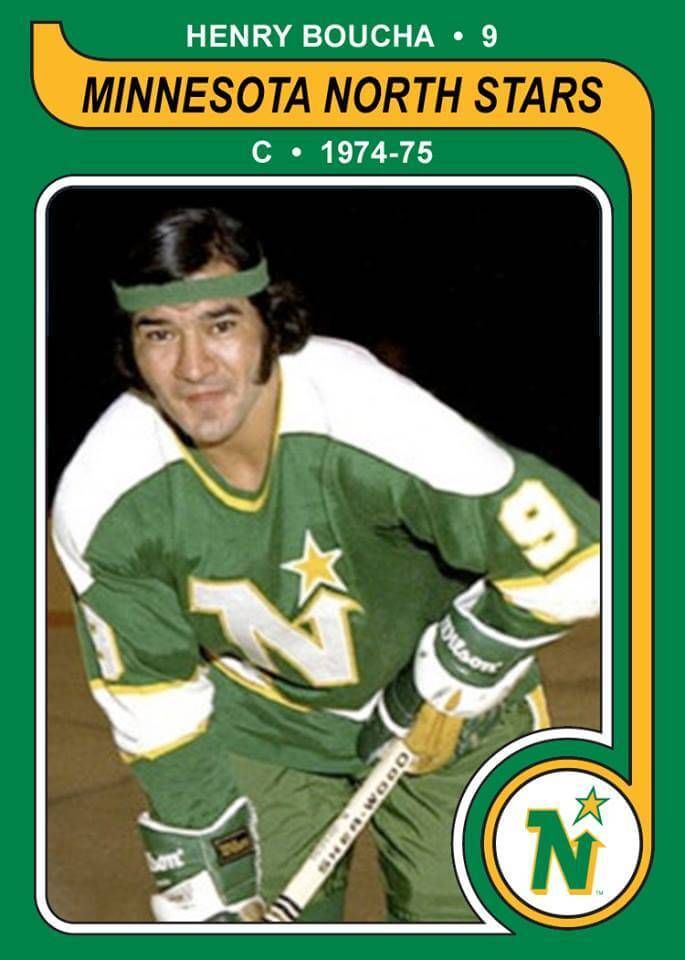
Henry Boucha, a member of the Northwest Angle No. 37 Ojibwe band, also showed early skill in multiple sports (including football and baseball), but found his passion playing hockey. Born in Warroad, Minn., Boucha excelled in both defense and center positions for five years for the Warroad High School hockey team. In 1969, he led the team to the state hockey tournament. Despite the emotional 5-4 overtime loss to Edina, Boucha's love of hockey only burned hotter.
While serving in the US Army, Boucha joined the national ice hockey team. He participated in the Ice Hockey World Championships in 1971 and helped the US Olympic hockey team take home the silver medal in 1972. He was just 19 years old.
Playing with the Detroit Red Wings in Montreal in 1973, Boucha scored a goal within the first six seconds of the game, tying the NHL record for the second-fastest goal from the start of the game. The 1972-73 Detriot Red Wings Rookie of the Year, Boucha returned home to play with the Minnesota North Stars in 1974 where he - and his trademark headband - became fan favorites. That same year, Boucha's eye was severely injured in a brutal stick incident while playing against Boston.
He continued to play - with the WHA's Minnesota Fighting Saints in 1976 and the NHL's Kansas City Scouts in 1977 - but he never fully recovered from the eye injury. He retired at the age of 24.
Boucha went on to play non-professionally for his hometown's Warroad Lakers team and became active in Native American causes both locally and nationally. He was inducted into the US Hockey Hall of Fame in 1995.
Kathleen Ridder
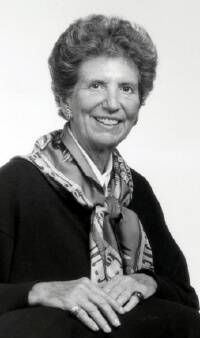
Kathleen Ridder was a lifelong lover of sports who dedicated her life to fighting for women's access to education and athletics. A gifted athlete, Ridder was often denied opportunities to play, growing up in a time before Title IX - the law that stated that "no person in the United States shall, on the basis of sex, be excluded from participation in, be denied the benefits of, or be subjected to discrimination under any education program or activity receiving Federal financial assistance."
Ridder deeply believed in the importance of education and athletics as a means to help women gain more equal footing with men in life and work. With a teacher's degree from the University of Minnesota - Duluth in hand, Ridder resolutely advocated for women's rights on multiple platforms. She served on nonprofit boards, University committees, the MN State Board of Human Rights and more. As a devout Catholic and supporter of the Republican party, Ridder bucked stereotypes and supported legalized abortion, LGBTQ+ rights and the proposed Equal Rights Amendment at the 1980 Republican National Convention.
In 1982, she joined forces with Democrat Marlene Johnson to form the bipartisan Minnesota Women's Campaign Fund (now Women Winning) to encourage more women to run for political office. The following year, she established the U of M’s first endowment awarded to a female student-athlete - the Kathleen C. Ridder scholarship.
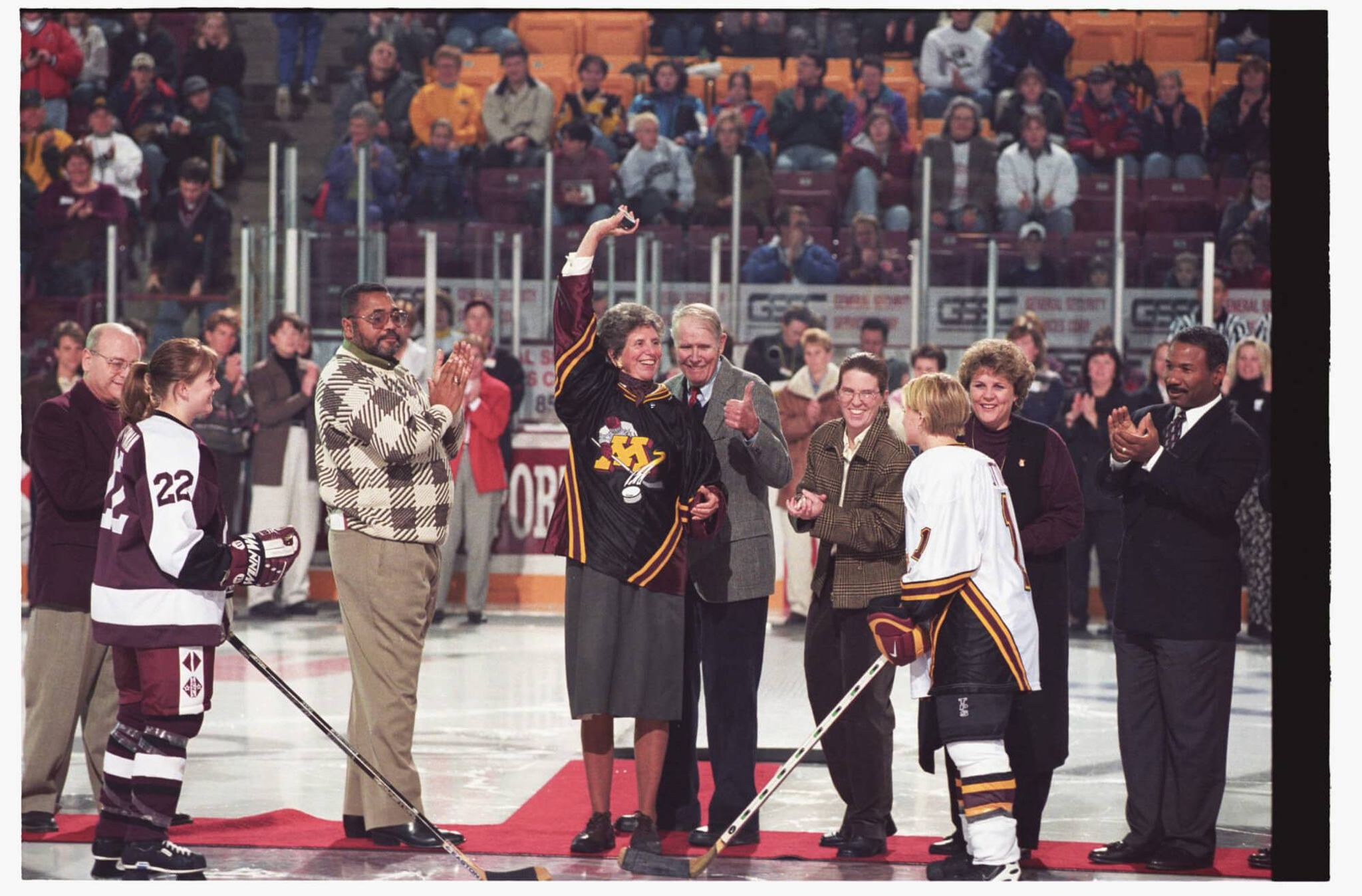
Ridder and her husband gifted $500,000 to the University of Minnesota for the creation of the country's first women’s-only college ice hockey facility – Ridder Arena, home to Minnesota Golden Gophers women’s ice hockey. Although her husband passed away before the arena was completed, the 80-year old Kathleen Ridder dropped the ceremonial first puck on opening night in 2002.
Shipstads & Johnson

Saint Paul's Eddie Shipstad, Roy Shipstad and Oscar Johnson made up the legendary "Shipstads & Johnson" team that pioneered the first large-scale professional touring ice show. As young men, the three lads gave impromptu comedic performances, showing off their daring stunts and fancy skating skills on Saint Paul's frozen rivers and lakes. As the crowds grew to the point of threatening the integrity of the ice, the trio knew they had something special on their hands.
They began performing at Saint Paul hockey games in the late 1920's. This led to a five-year gig at Madison Square Garden, where they entertained fans at Rangers games. Recruiting other skaters, the team returned to Minnesota in 1935 to put on a big show at the Saint Paul Auditorium. This show would become the model for the Ice Follies.

The Ice Follies tour proved so successful that it led to the creation of a less-successful film, "The Ice Follies of 1939," which starred Joan Crawford alongside the Shipstads and Oscar Johnson. The team continued to tour their unique spectacle to sold-out audiences around the country. In 1940, when they declined to form a second company, a rival troupe - the Ice Capades - was created. The three men sold the Follies, which would eventually be absorbed by Disney on Ice, for $3.5 million in 1954.
Toni Stone
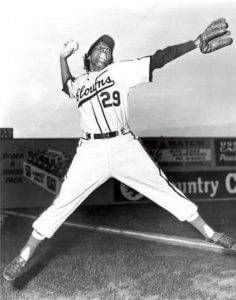
Toni Stone was the first woman to play baseball in the "Negro Leagues." Although it is challenging to find accurate information about Stone (given that the record-keeping for the Negro Leagues was less than meticulous), we do know that she was born as Marcenia Lyle Stone in Minnesota in 1921 and that, prior to becoming the first woman to play in the Negro American League in 1953, she played against men and boys for years as a young woman in Saint Paul's Rondo neighborhood.
By the age of 16, Toni Stone was playing on the Twin Cities Colored Giants semi-professional team. Around 1946, Stone began playing for the Wall Post American Legion team and, shortly after, for the San Francisco Sea Lions. In 1949, she began traveling the country, playing for the New Orleans Creoles. In 1953, she was signed to the Indianapolis Clowns - part of the Negro American League.
As one might imagine, Stone encountered cold shoulders and worse from her teammates, opposing players, coaches, team owners, fans and the press - who often chose to highlight her bust measurements instead of her 2-year batting average (which was estimated at .243 following the 1953 season). Her teammates would tell her to "go home and fix your husband some biscuits," while the opposing teams put a target on her back. She would often show off a set of scars on her left wrist after a player tried to take her out on second base. But, as a 1953 Ebony article noted: “While most sports fans were sure that the Clowns signed Toni merely as an extra box-office attraction, the young lady has surprised everybody by turning in a businesslike job at both second base and at the plate. In her first game against a semi-pro team in Elizabeth, N.C., she walked and then drove in two runs with a sharp single.”
Following the 1953 season, Toni Stone's contract was sold to the Kansas City Monarchs and after the 1954 season, she retired from professional baseball.
W. Harry Davis Sr.
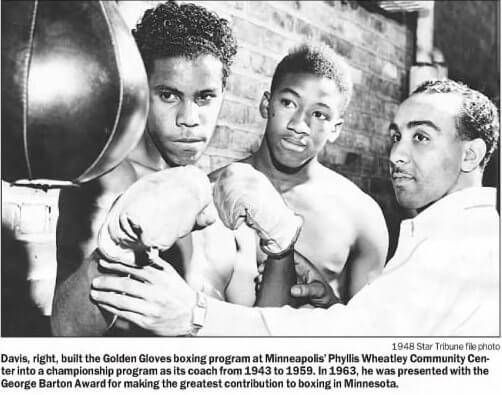
As a young man, W. Harry Davis spent a great deal of time at the Phyllis Wheatley settlement house - like many of his peers in North Minneapolis. There, Davis learned boxing and other skills that would support him in his lifelong pursuits. In the '40s, Davis founded Phyllis Wheatley's competitive boxing program. From 1945 to 1960, the Phyllis Wheatley boxers won most of the upper Midwest boxing championships. During the '70s and '80s, Davis returned to his love of boxing, serving on the U.S. Olympic boxing committee.
In addition to his accomplishments as an athlete and coach, Davis also helped found the Minneapolis Urban Coalition, served 20 years on the Minneapolis School Board during the height of desegregation, founded a bank, led a historic church merger, was one of the first Black executives at a major Twin Cities corporation, authored two books, was the recipient of nearly 80 civic leadership awards and was Minneapolis' first Black mayoral candidate.
Charles Albert Bender
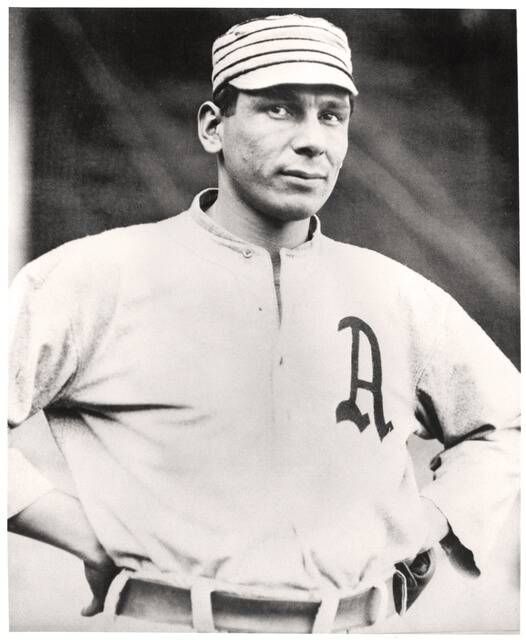
Born in Crow Wing County in 1884 and raised on the White Earth Reservation, Charles Albert Bender was sent to a boarding school for Native American children near Philadelphia at age 7. At 13, he was recruited to attend the Carlisle Indian School in Pennsylvania. While there, he honed his athletic skills as a member of the school's baseball, basketball, football and track teams.
Bender graduated at age 19 and, before his 20th birthday, was signed to the Major League team, the Philadelphia Athletics. By the end of his rookie year, he had won 17 games with a 3.07 ERA and 29 complete games. With Bender on their team, the A's would go on to win the World Series in 1910, 1911 and 1913. He is credited with inventing the "Slider," a.k.a. the "Nickel Curve" - an extra-fast curveball.
Amid his success, Bender encountered a staggering amount of bigotry from both fans and the press, and he endured everything from racist cartoons in the sports section to epithets hurled at him when he was on the mound. Even to this day, he is listed in places like the Baseball Hall of Fame as "Chief Bender," not as Charles Bender, despite signing autographs as "Charley Bender" and having once said, "I do not want my name presented to the public as an Indian, but as a pitcher."
Bender would go on to win 212 games over his Major League Baseball career with 1,711 strikeouts and a 2.46 ERA. From 1924 to 1928, Bender managed the United States Naval Academy baseball team, where he recorded a 42-34-2 record for the institution. In 1925, Bender came back to the majors as a coach for the Chicago White Sox and, in 1931 and 1932, he coached for the Giants and the Yankee affiliate in the Central League, respectively. In his last years, he worked again with the A's as a scout, Minor League manager and coach. In 1953, he became the first Minnesotan inducted into the National Baseball Hall of Fame.
Dan Patch
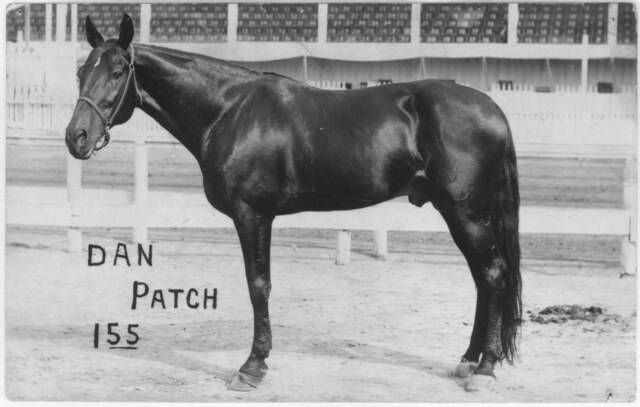
Dan Patch came from humble beginnings: Foaled in 1896, he was born with legs so crooked that he couldn't stand on his own. But with help from his owner, Dan Messner (from whom Dan Patch got his first name), his legs gradually grew straighter, although he would continue to wear a horseshoe throughout his life that helped to stabilize his left hind leg. One of Messner's friends, John Wattles, saw potential in the well-tempered colt and trained him to pull a buggy.
When Dan Patch showed an unprompted interest in running, Messner and Wattles began entering him in harness races in 1900. By the end of 1901, Dan Patch had won so many races that no one would enter their horse against him.
In 1902, Messner sold Dan Patch to Manley E. Sturges for a record $20,000. After another successful racing season, Sturges sold Dan Patch in 1902 to Minnesota businessman and owner of International Stock Food Marion Willis Savage for the unprecedented amount of $60,000 (equivalent to more than $1 million in today's dollars). Savage - for whom the city of Savage, inn., is named - easily made his money back through both racing and for lending his likeness to everything from washing machines to thermometers long before athletes began appearing on cereal boxes.
In 1906, at age 10 - well past most racehorse's prime - Dan Patch ran his fastest mile in 1:55 at the Minnesota State Fair, a record that remained uncontested for 54 years. Dan Patch retired undefeated in 1909, holding 9 world records.
Quiet and always classy, Harmon Killebrew’s down-to-earth style was an understated as his athletic prowess was mighty. As Minnesota’s first baseball hall-of-famer, he put the state o n the sports map. Discover more in “Harmon Killebrew hit 573 home runs. And he liked to wash dishes.”
For years, some American sports teams have appropriated Native American imagery in their logos, which has spurred debates and demonstrations across the country. Bemidji State University Professor of Ojibwe, author and speaker Dr. Anton Treuer argues that "we need to have ethics around [the use of mascots] and many other issues in our national sports culture." Find out "Why Indigenous languages, education, hair and the portrayal of mascots matters."
